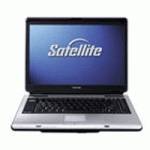Modern day BIOS fireware is normally stored on EEPROM (Electronically Erasable Programmable Read-Only Memory) or flash memory devices, which can be easily updated or flashed by users. Flash is the term used to describe process to write a new BIOS code into the ROM, replacing the existing BIOS. However, there is risk that users improperly execute or abort a BIOS update, and cause BIOS corrupts, and render the computer or device unusable or unable to boot up. Bad flash or flash mistake cause a lot of problem and disable the system, In this case, users with corrupted BIOS can only staring at the blank screen, or POST process screen indefinitely.
If for any reason your motherboard (mobo) BIOS corrupted, if you’re motherboards comes with a backup BIOS (Dual BIOS boards or Quad BIOS board from Gigabyte), then you still be able to boot up and log on to operating system. If you’re not, and your computer or motherboard is using an AMI BIOS, then you can use the following fail safe emergency BIOS load trick to try to recover the BIOS corruption. The hack works on the basis that AMI BIOSes have a recovery process that embedded in “boot block” which is a portion of the ROM that runs first and is not updateable. Code in boot block verify that the rest of the BIOS is intact (via checksum, hash, etc.) and if it detects that the main BIOS in “system block” is corrupt, the recovery routine is called and for AMI BIOS, it will boot to a floppy to access any new BIOS file with the name AMIBOOT.ROM. If found, the file will be read and flash or write to the system block, replacing the corrupted or bad main BIOS.
Recovery procedures for AMI BIOS
- Download the latest version or your choose version of BIOS file for your computer or motherboard from the manufacturer’s support site.
- Rename the downloaded file to AMIBOOT.ROM.
- Copy the file to a floppy disk.
- Insert the floppy disk to the floppy drive.
- Turn on the system.
- The system should automatically access the floppy drive (indicated LED will light up). If no floppy access occurs press and hold Ctrl-Home to force update. Follow any on screen instruction to restore and recover the good BIOS from the floppy disk.
- When 4 beeps are heard or a reboot prompt you may remove the floppy disk.
- Restart the computer.
Souce: SirReal and marmo.




